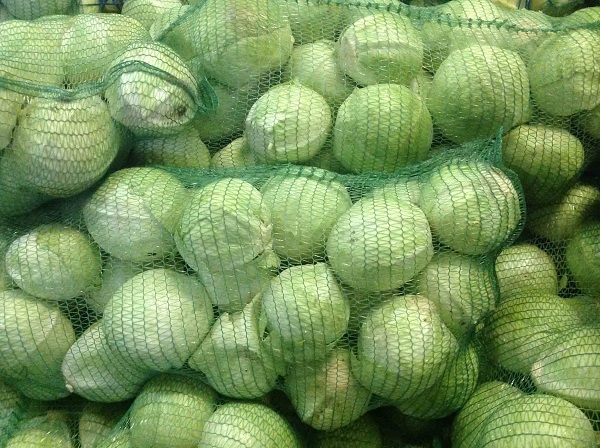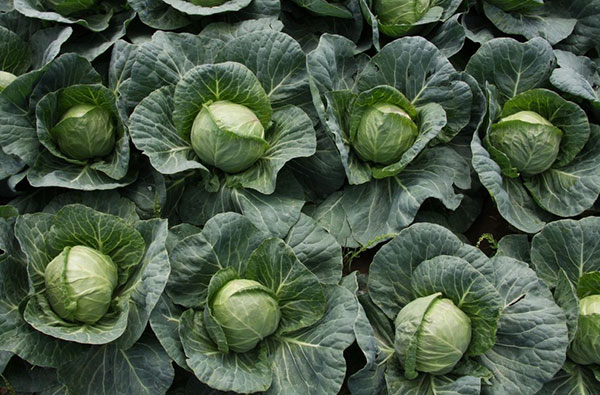Cabbage Golden Hectar is actively grown in Ukraine and Moldova. Every year the variety becomes more popular with Russian gardeners due to its characteristics. It was spread for the possibility of obtaining a friendly early harvest and excellent taste.
Table of contents
Characteristics and general description of the variety
Cabbage Golden Hectar belongs to the early ripening varieties. From the moment of germination of seeds to the technical maturity of the fruit, no more than 110 days pass. Cultivation of a grade happens by a seedling method in separate capacities or the warmed greenhouses and greenhouses. Plants are planted in open ground 50 days after emergence of shoots.
The variety has a good germination of seeds. Plants have a compact semi-raised outlet. The leaf is small, round shape. Young plants have a light green color, there is a small wax coating. Mature cobs have a rounded shape, smooth. The average value. Density is high. Weight ranges from 1.5 to 3 kg. Productivity varieties high.
The grade possesses excellent tastes. Good for fresh consumption in salads, for sourdough. It is subject to transportation.
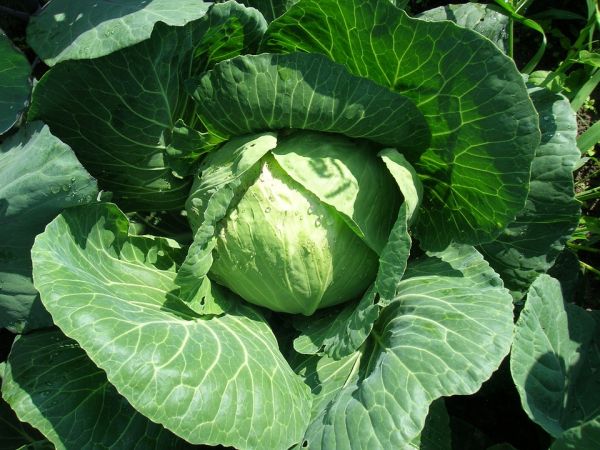
Advantages and disadvantages of the golden hectare
Here is a description of the benefits of cabbage golden hectare for which it is becoming more common:
- high yield;
- resistance to diseases and pests;
- earlier and ripening;
- high taste qualities;
- high content of micro and macronutrients.
In the cabbage Golden Hectar in large quantities contains potassium, calcium, phosphorus, zinc, iodine, amino acids, vitamins of group B, A, PP, K. The leaves have a high content of vitamin C, which makes consumption beneficial to health.
Of the shortcomings of the variety, not very good indicators of keeping quality, as well as some demands on the soil, are noted. With a general simplicity, the variety reacts negatively to the acidic and infertile soil.
Features of germination of seedlings
Cabbage Golden hectare belongs to the early varieties. It is diluted by seedling. Cabbage seeds germinate well at low temperatures. The optimal conditions for growing seedlings are +18 degrees.
Sowing seeds produced in the first half of March. For germination use individual peat pots or special containers. The soil is suitable ready for cabbage or cooked yourself. Previously it must be treated with a disinfecting solution.
Seeds before planting soaked in a solution of manganese.This increases germination and reduces the risk of infection. Before the appearance of the first shoots, the seeds are kept under the film at a temperature of +20 degrees. After the first shoots, the film is removed, and the temperature is reduced to +10 degrees. A week later, the young plants are again placed in heat, trying to withstand the daily temperature of +17 degrees, night +9.
Saplings dive in the stage of two mature leaves. Immediately after transplanting, plants are kept warm, gradually lowering day and night temperatures again. A certain mode allows you to grow strong frost resistant seedlings.
Saplings before planting in open ground are fed in 3 stages.
- stage. The first feeding is carried out 10 days after the dive of the plants. Potassium and superphosphate solutions are used.
- stage. Re-feeding is carried out 10 days after the first fertilization. Ammonium nitrate is used.
- stage. The third dressing is needed 10 days before planting in open ground. A mixture of potash, ammonia and superphosphate fertilizers is used.
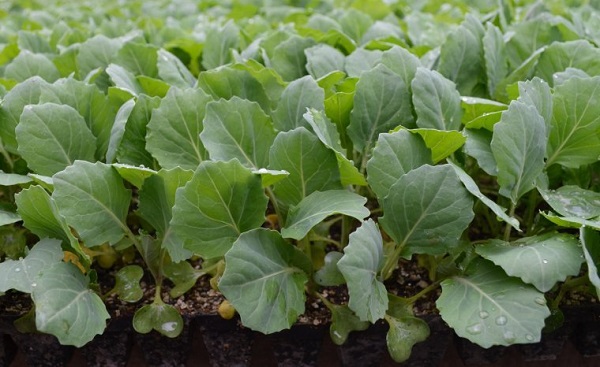
Site preparation for cultivation
Variety Golden Hectar is unpretentious types of cabbage.It does not require special soil preparation or site selection. For maximum yield, gardeners choose a well-lit area for cabbage. The lack of light leads to the formation of small leaves and poor head formation.
To increase the yield it is recommended to carry out preliminary preparation of beds for cabbage. Preparation consists of adding lime mortars to the soil in autumn to reduce acidity, as well as adding fertilizers to increase soil fertility. The best predecessors for the Golden Hectare are:
- solanaceous (pepper, tomato, potato);
- legumes;
- pumpkin;
- bow.
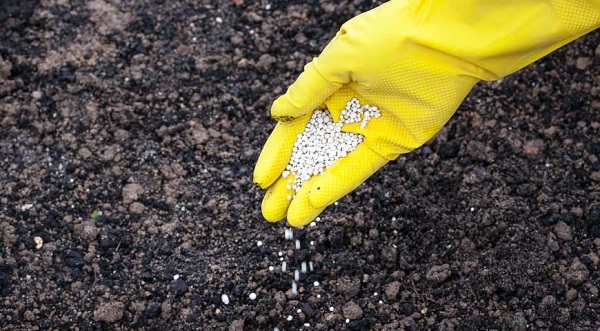
Planting in open ground and subsequent care
Sprouts are planted in the open ground in the state of 4-5 adult leaves. From the moment of the appearance of the first shoots to the transfer to a permanent place, at least 40 days must pass. The best is considered the second half of May, when the threat of the last frost has passed.
In the ground plants are planted according to the scheme 60 * 60 centimeters. The thickening of the planting leads to a deterioration in the quality of the crop. For seedlings prepare deep holes. Plants are placed to the bottom leaves. The earth around the roots is well compacted.
Grade Golden Hectar unpretentious to care. It requires regular watering as the top layer of soil dries. On the next day after watering, loosening the soil is recommended. This procedure allows you to bring down the frozen earthen crust and improve the penetration of oxygen to the roots of plants.
Top dressing cabbage is made 2-3 times per season. The first stage is recommended to be carried out 15-20 days after landing in the ground, the second in the middle of the season. The third feeding is made during the formation of heads. 1-2 weeks before the harvest, the watering of the plants stops completely.
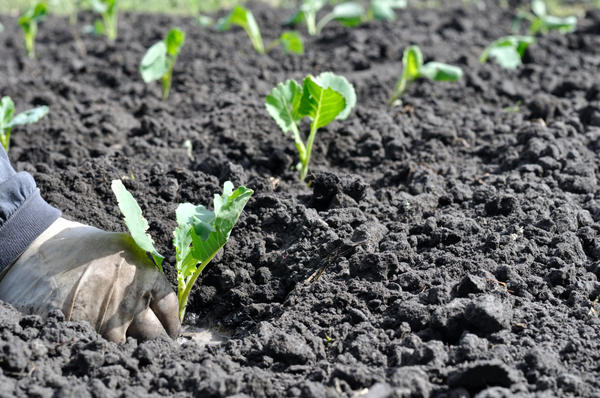
Diseases and pests of the variety
Golden Hectar is a variety resistant to pests. It is less susceptible to tsvetushnosti, keel and cracking of ripe fruits.
Disease of plants occurs in open ground with its increased acidity.Powdery mildew may appear during severe night frosts.
To prevent plant contamination by diseases and pests, it is recommended to carry out preventive spraying. During the formation of heads, they are watered on top of water.

Crop storage rules
Harvesting is done after the completion of the formation of heads. The technical maturity of cabbage comes in 100-110 days after emergence of shoots. This period falls on the end of July - beginning of August, depending on the time of sowing and planting in open ground.
The maturity of the fruit is determined by the cessation of the growth of the mass of heads and the yellowing of the upper leaves. To collect choose a dry sunny day. Cabbage perfectly transports transportation, preserves commercial quality for a long time. The variety is not suitable for storage during the winter period. To prolong its safety allows hanging heads in grids in dark cool rooms with dry air.
